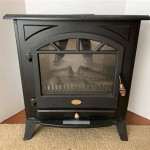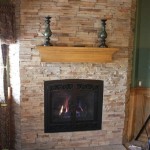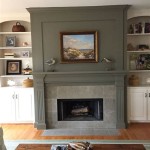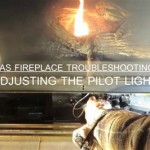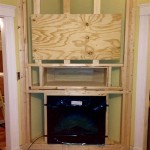How Does A Wood Burning Fireplace Insert Work?
A wood burning fireplace insert is a self-contained heating appliance designed to be installed directly into an existing masonry or factory-built fireplace. Unlike traditional open fireplaces, which are notoriously inefficient at heating a space, fireplace inserts are engineered to provide a more controlled and effective heating solution. They achieve this efficiency through a combination of controlled combustion, heat circulation, and venting design. The primary purpose of a fireplace insert is to convert a drafty, aesthetically pleasing but energy-wasting fireplace into a functional and efficient heat source for a home.
Essentially, a wood burning fireplace insert acts as a mini wood stove contained within a metal box. This box is typically constructed from cast iron or steel, materials known for their durability and heat retention properties. The insert seals off the existing fireplace opening, preventing the majority of room air from escaping up the chimney. This design significantly reduces heat loss compared to an open fireplace, where the warm air from the home is drawn up the chimney along with the smoke. The insert then heats the surrounding air through radiation and convection, effectively warming the room.
The operation of a wood burning fireplace insert involves several key components working together to maximize heat output and minimize emissions. These components include the firebox, air intake system, baffle system, and venting system. The precise function of each component is critical to the overall performance and efficiency of the insert.
Controlled Combustion and Airflow
One of the most significant features of a wood burning fireplace insert is its ability to control the combustion process. Unlike open fireplaces, which have uncontrolled airflow, inserts utilize a system of adjustable air intakes. These intakes allow the user to regulate the amount of air entering the firebox, influencing the rate at which the wood burns. By controlling the airflow, the insert can achieve more complete combustion, reducing the amount of smoke and creosote produced while maximizing heat output.
Many modern wood burning fireplace inserts feature a secondary combustion system. This system introduces preheated air into the upper part of the firebox, igniting the unburned gases and particulate matter that would otherwise go up the chimney as smoke. This secondary combustion process not only reduces emissions but also extracts additional heat from the wood, further increasing the insert's efficiency. The presence of a secondary combustion system is a key indicator of a more advanced and efficient fireplace insert.
The air intake system usually consists of primary and secondary air controls. The primary air control regulates the airflow at the bottom of the firebox, primarily influencing the initial ignition and burning rate of the wood. The secondary air control regulates the airflow to the secondary combustion chamber, which burns off the remaining gases and pollutants. Proper adjustment of these controls is essential for achieving optimal combustion efficiency and minimizing smoke production.
Heat Transfer and Circulation
After the wood burns and generates heat, the insert must efficiently transfer that heat into the living space. Wood burning fireplace inserts achieve this through a combination of radiant and convective heating. The metal body of the insert, typically made of cast iron or steel, radiates heat directly into the room. This radiant heat warms objects and people directly in its path.
Convective heating involves the circulation of air around the firebox. Many inserts are equipped with a blower fan that forces air across the heated surfaces of the insert. This heated air is then circulated back into the room, distributing warmth more evenly throughout the space. The blower fan significantly enhances the insert's ability to heat a larger area and is particularly beneficial in open floor plan homes.
The design of the insert also plays a role in heat transfer. Baffles and heat exchangers within the firebox are designed to maximize the surface area exposed to the hot gases from combustion. This allows for greater heat absorption and transfer to the surrounding air. The overall construction and design of the insert are critical factors in determining its heating efficiency and effectiveness.
Venting and Exhaust System
A crucial aspect of a wood burning fireplace insert is the venting system. Because inserts seal off the existing fireplace opening, they require a dedicated flue liner to safely vent exhaust gases out of the home. This liner is typically made of stainless steel and is sized to match the flue outlet of the insert. The liner is inserted into the existing chimney and connected to the insert, creating a sealed pathway for the exhaust gases to escape.
The proper installation of the flue liner is paramount for safety and efficiency. An improperly sized or installed liner can lead to poor draft, causing smoke to back up into the living space. It can also increase the risk of creosote buildup, which is a highly flammable substance that can lead to chimney fires. Therefore, it is essential to have a qualified professional install the flue liner and ensure it meets all applicable building codes.
The venting system also plays a role in creating the necessary draft for proper combustion. The draft is the upward flow of air through the chimney, which draws fresh air into the firebox and removes exhaust gases. A well-designed venting system ensures a strong and consistent draft, contributing to efficient combustion and minimizing smoke spillage. Factors that can affect the draft include chimney height, diameter, and insulation.

How Fireplace Inserts Work We Love Fire

What Is A Gas Insert Comfort By Design

Dual Fuel Fireplace Insert Wood Burning Inserts For Action

What Is A Fireplace Insert And How Does It Work

How Fireplace Inserts Work We Love Fire

Why A Wood Burning Fireplace Insert Bethesda Md Service

Frequent Questions About Wood Burning Appliances Us Epa

Why A Wood Burning Fireplace Insert Bethesda Md Service

Fireplace Inserts Explained Typical Sizing Functionality More

Guide To Fireplace Inserts Quality Overhead Door
Related Posts

